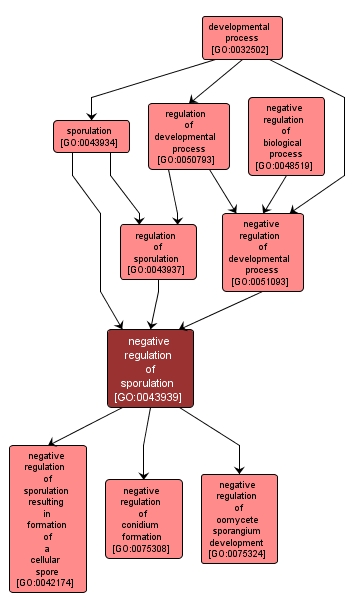GO TERM SUMMARY
|
| Name: |
negative regulation of sporulation |
| Acc: |
GO:0043939 |
| Aspect: |
Biological Process |
| Desc: |
Any process that stops, prevents or reduces the frequency, rate or extent of sporulation, the process whose specific outcome is the progression of a spore over time, from its initiation to the mature structure. |
|

|
INTERACTIVE GO GRAPH
|














